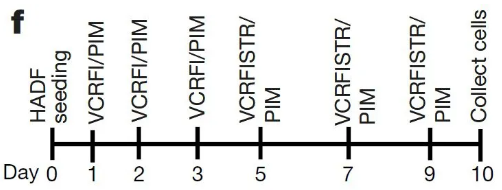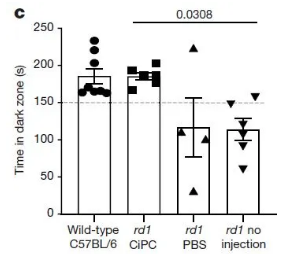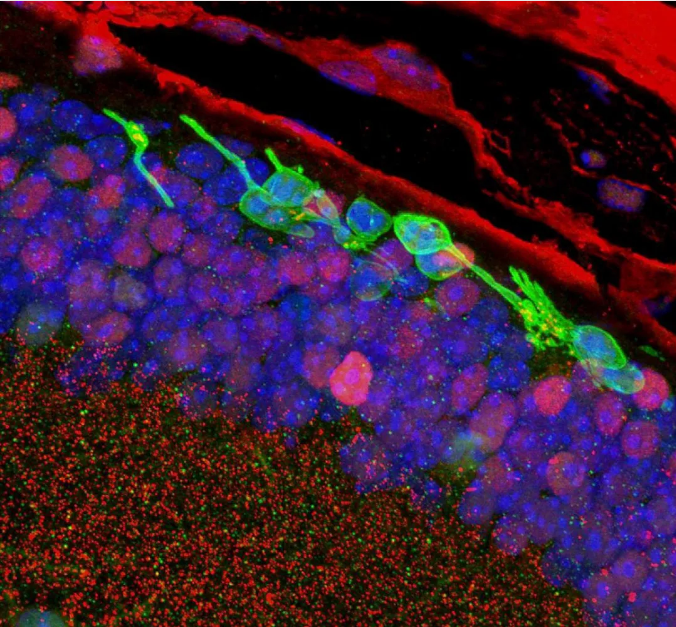A new technology from Nature transforms skin cells into photoreceptor cells, making the cure for blindness just around the corner.
Release time:
2020-04-20
On April 16, 2020, news emerged that a research paper published online in the prestigious academic journal "Nature" has brought a glimmer of hope to many patients who have gone blind due to retinal diseases. A research team led by Dr. Sai Chavala, an ophthalmology expert at the Retina Innovation Center of CIRCTherapeutics, has developed a technique to directly convert skin cells into photoreceptor cells of the retina—nerve cells that sense light.
On April 16, 2020, a research paper published online in the prestigious academic journal "Nature" brought a glimmer of hope to many patients who have gone blind due to retinal diseases. A research team led by Dr. Sai Chavala, an ophthalmology expert at the Retina Innovation Center of CIRC Therapeutics, developed a technique to directly transform skin cells into photoreceptor cells of the retina—nerve cells that sense light. When these modified cells were transplanted into the eyes of mice, the blind mice were able to see again!
Many retinal diseases ultimately lead to blindness. For example, age-related macular degeneration is the leading cause of blindness in people over 65, with more than 170 million patients worldwide; diabetic retinopathy is a severe complication of diabetes; and retinitis pigmentosa is a hereditary eye disease that usually causes gradual vision loss starting in childhood until complete blindness.
The reason these eye diseases lead to blindness is the loss of photoreceptor cells in the retina. Due to their difficulty in regeneration, once photoreceptor cells are lost, the process of blindness cannot be reversed. Currently, there are no effective treatments to help patients restore their vision, aside from trying to prevent and delay the progression. Therefore, finding ways to regenerate photoreceptor cells has become a key focus for researchers.

In the past decade, scientists have utilized induced pluripotent stem cell (iPS) technology to achieve this goal. This technology can cultivate skin or blood cells into stem cells and then shape the developmental direction of these stem cells to produce photoreceptor cells. However, in this study, the ophthalmology experts found a new method that skips the stem cell stage.
After repeated exploration of conditions, the researchers identified a "cocktail" formula consisting of five small molecular compounds that activate or inhibit different developmental signals within the cells. By feeding these compounds to cultured skin fibroblasts in different combinations at specific times, they ultimately changed the fate of these skin cells.
By examining the gene expression profile of the new cells, the researchers found that they were very similar to the genes expressed by rod cells (a type of major photoreceptor cell). Therefore, these transformed new cells were named "chemically induced photoreceptor cells," abbreviated as CiPCs. Compared to the months required for reprogramming using iPS cells, this technique completed cell transformation in just 10 days.

▲ By adding small molecular compounds that regulate different developmental signals at different time points during cell culture, human skin fibroblasts can be transformed into CiPCs in just 10 days.
However, the fact that CiPCs express genes similar to rod cells does not mean they can replace the functions of rod cells. The researchers then conducted transplantation experiments, implanting CiPCs into the eyes of mice with retinal degeneration to test the functionality of these cells.
Before the cell transplantation, these mice could not perceive light due to the lack of rod cells, and their eyes did not exhibit pupillary reflex (the pupil constricts when light increases and dilates when light decreases). However, 3 to 4 weeks after cell transplantation, the mice began to show encouraging changes: among 14 mice, 6 showed significant changes in pupil size under low light conditions. They were very sensitive to faint light, which is a characteristic function of rod cells.
To assess whether the visual function of these 6 mice had truly recovered, the researchers also conducted a "light aversion test." Normally, mice prefer to hide in dark places. However, blind mice that cannot perceive light intensity do not show a preference for dark environments. In contrast, the 6 mice that received CiPCs transplantation spent as much time in the dark as normally sighted mice, significantly longer than the blind mice that did not receive cell transplantation.

▲ Mice that successfully received CiPCs transplantation preferred to stay in dark environments just like normally sighted mice.
As time went on, when the researchers continued to examine these previously blind mice three months after transplantation, they observed that many CiPCs were still alive and had established connections with other nerve cells in the retina, truly becoming a part of the retina.
One of the authors of the study, Dr. Anand Swaroop, summarized: "This is the first study to show that direct chemical reprogramming can produce retinal-like cells, providing us with a faster new strategy for developing therapies for retinal diseases such as age-related macular degeneration."

▲ Three months after transplantation, the surviving CiPCs (green) integrated into the retina of the mice.
Of course, to apply this technology for regenerating photoreceptor cells in human patients, there is still a long way to go. Researchers stated that they need to optimize the protocol to increase the number of functional transplanted photoreceptor cells and further improve the efficiency of this direct cell modification technology.
According to the U.S. National Eye Institute, which funded this project, researchers have planned to conduct a clinical trial to test whether this therapy is suitable for eye diseases such as retinitis pigmentosa.
We look forward to innovative technologies bringing real light to patients!
About Photoreceptor Cells
Photoreceptor cells are a type of special nerve cell found in the retina of the eye, capable of converting light. More specifically, photoreceptor cells absorb photons from the visual field and then transmit this information through a series of complex biochemical pathways by changing membrane potential.
Finally, the visual system processes these signal information to present a complete visual world. Of course, the above description pertains to the photoreceptor cells of vertebrates. In contrast, for invertebrates such as insects and mollusks, their photoreceptor cells differ in morphology and biochemical pathways.
Related Information
Traditional Chinese Medicine for Liver Cancer and Liver Cirrhosis - Sanjie Pian, safeguarding 447 million chronic liver disease patients.
2022Year4Month15to21The day is the28first National Cancer Prevention and Control Publicity Week
In 2021, the anti-liver cancer traditional Chinese medicine - Sanjie Pian passed the expert review by the Ministry of Science and Technology, achieving a level of technological advancement that is considered leading in the country. The research and development results have been included in the National Science and Technology Achievements Database (No. 6012021Y0389). It was publicly announced on the National Science and Technology Achievements Registration Work Platform (Guokewang) in March 2022.


